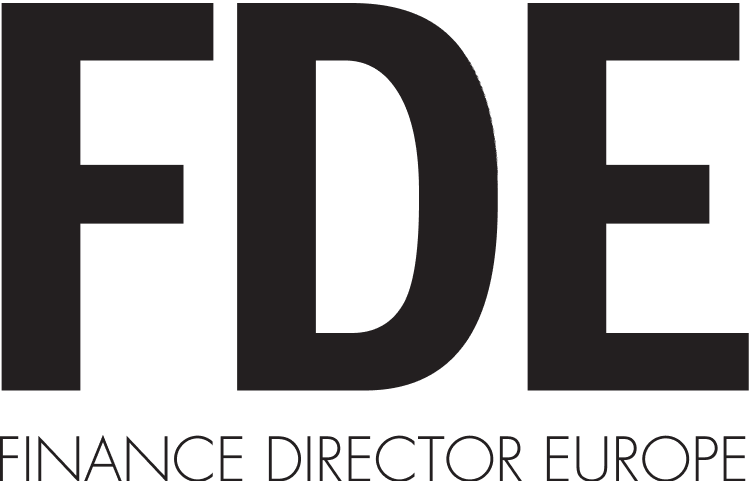
Based in Cambridge in the UK, AVEVA provides innovative industrial software to transform complex industries such as oil and gas, construction, engineering, marine and utilities. The group’s solutions and platform enable the design and management of complex industrial assets like power plants, chemical plants, water treatment facilities, and food and beverage manufacturers – deploying IoT, big data and artificial intelligence to digitally transform industries.
Back in June 2019, AVEVA joined the FTSE 100 and, since then, its success has continued as profits have now doubled. While many other high-profile companies have struggled badly during the coronavirus crisis, AVEVA has done well. Profit before tax increased by 97% to £92m on revenue that is 8.8% ahead at £833.8m.
The share price soared 178.73p (4.45%) to 4,200.36p when the UK stock market opened, and AVEVA’s market capitalisation is now £6.82bn. This has left the business in a strong position to weather a precarious economic storm as it has not taken government loans, while refusing to cut or furlough its 4,400 employees. Following these impressive results, CEO Craig Hayman explained the secrets to the group’s good record during this turbulent period, “The [business] has grown as we play a leading role in the digitalisation of the industrial world, which is being driven by a need for sustainability, the industrial internet of things, cloud, data visualisation and artificial intelligence,” he said in a recent company interview. “At the same time, we continued to drive operational improvement in the business, which is increasing recurring revenue and margins.
“AVEVA’s team has adapted impressively to the current market and operating environment. The safety of our employees is paramount and I was very pleased that we managed to deliver a successful close to our financial year, with 95% of employees working remotely.
“Subscription requires less upfront investment and makes purchasing decisions easier. This can lead to better long-term growth for software companies because software tends to have very low churn, and stronger, more predictable long-term cash flow.”
“We are focused on being digital in everything that we do, accelerating cloud and driving the roll out of our subscription offering, AVEVA Flex.
“AVEVA is well placed to navigate through the challenges of the current environment, with the benefit of recurring revenue from multiyear contracts. AVEVA is in a strong position, and our strategy and medium-term objectives remain unchanged.”
Head in the cloud
Playing a role in these ambitious and forward-thinking objectives is James Kidd, a chartered accountant who joined the company back in 2004. Prior to his appointment to the board, he held several senior finance roles within the group and was head of finance from 2006 until 2011, when he was appointed CFO. Kidd was chief executive from January 2017 to February 2018, leading the merger with the Schneider Electric software business before being appointed to deputy CEO and chief financial officer of the enlarged group.
He points out that developments in technology, particularly the shift to the cloud, are helping to drive exponential business evolution. According to a recent report from Research and Markets, the growth in the global digital transformation market is primarily driven by factors, such as perpetually growing internet users and smart devices, increasing technological advancements, and government initiatives towards digitisation.
Many software companies that used to sell perpetual licences are now transitioning to a subscription-based approach. Instead of selling and installing a high upfront cost, on-premise software solution with a support package, for example, under a subscription model, software can be hosted on the cloud and businesses are trading access to software through subscription.
“This gives customers more flexibility in how they consume software,” he explains. “Subscription requires less upfront investment and makes purchasing decisions easier. This can lead to better long-term growth for software companies because software tends to have very low churn, and stronger, more predictable long-term cash flow.”
Evolving to a recurring revenue business model has a transformational impact for both internal and external stakeholders, according to Kidd. Consequently, strong planning and communication are vital in order to deliver an effective transition.
Communicate the transition
While compelling from a long-term value creation perspective, the transition to a subscription model brings several challenges.
“Firstly, it is vitally important that businesses frame this transition in terms of how it will benefit customers,” he explains. “In an increasingly competitive business environment, where deploying the best technology gives customers a competitive advantage over their peers, flexible access to the latest software at a low initial cost and risk is of great benefit.”
Secondly, he states that while there is no doubt that the recurring revenue model is attractive from an investor perspective, as it can deliver higher lifetime value from the customer base, these transitions do bring short-term challenges.

“Due to the loss of upfront revenue from initial licence fees, there can be a short-term impact on revenue and margin at the beginning of a transition,” he says. “The impact of this needs to be clearly explained and put in the context of improved long-term margin and cash flow generation opportunity that subscription business models offer.” The CFO role is therefore crucial to the success of these communications, which to be successful, need to be underpinned by accurate forecasting, analysis and reporting metrics.
Deliver the transition
Kidd explains that the CFO position is also central to shaping a successful transition. Understanding and designing an optimal product offering and revenue generation model is key, particularly given the revenue recognition implications of different commercial models.
“IFRS 15 gives you very different answers for SaaS, on-premise subscription, hosted solutions and so on,” he says. “Decisions on where to place investment to drive the transition, for example in R&D, sales and marketing, and customer support functions are also vital.” According to Kidd, there are three key recommendations for a successful transition to a recurring revenue model:
■ Get the commercial proposition for the customer right: it needs to be crystal clear why customers would want to buy a subscription over a perpetual licence. It must be evident what the benefits are for the customer with the value proposition compelling.
■ Align the salesforce with corporate objectives: it is vital to make sure that sales incentives are aligned with the company’s strategy to drive the right behaviours. Transitioning from upfront licence fees – traditionally attracting large sales commissions at that point – towards a model that attracts much lower upfront revenue is a challenge and therefore remuneration structures need to be amended. Training around understanding and selling new product offerings is also essential.
■ Build back office capabilities: back office finance processes will see significant change and it is important to ensure that the business retains key staff and attracts new talent who can support this change. Processes relating to revenue recognition, invoice processing, renewal management and contracting models will change. Potentially, there is a higher volume of transactions. The renewal process may need to be re-engineered, acknowledging when renewals happen now, and who is responsible for handling them.
£6.82bn
AVEVA’s current market capitalisation.
AVEVA
“IFRS 15 gives you very different answers for SaaS, on-premise subscription, hosted solutions and so on. Decisions on where to place investment to drive the transition, for example in R&D, sales and marketing, and customer support functions are also vital.”
Kidd explains that as business models continue to evolve, CFOs must be at the heart of the team, developing delivery metrics and fresh ways of demonstrating business performance. CFOs need to set new targets that need to be achieved as part of the change in business model and have KPIs that help track progress against those objectives, such as annual recurring revenue, net renewal rates and churn. This will require some changes to back office processes and systems to ensure this data is captured.
The digital transformation market
According to Valuates Reports, technologies such as cloud computing, internet of things (IoT), big data and artificial intelligence (AI) are paving the way for smart business transformations.
Based on type, the digital transformation market can be classified into AI, IoT, cloud-based and others. Among them, the cloud-based segment is expected to dominate the sector with a share of 49.38%
In 2019, the global digital transformation market size was valued at $330.6m and is projected to hit $784.9m by the end of 2026, with a CAGR of 13.0 % for 2021–26. According to the company, these are the key trends influencing the market size:
■ Mobile devices and apps have revolutionised many aspects of modern life. This has, in turn, paved the way for the digitisation of different industry verticals. Organisations and businesses across the world are digitally transforming their traditional brick-and-mortar businesses into online businesses. This increasing penetration of mobile devices is expected to increase the digital transformation market size during the forecast period.
■ The increased demand for industrial automation is the primary driver for the growth of digital transformation market size. Furthermore, the market is expected to experience rapid growth over the forecast period due to the convergence of AI, machine learning, and rapid deployment of IoT and connected infrastructures.
■ Increasing consumer buying power and the need to fulfil consumer standards, which in turn contribute to established customer retention and new customer acquisitions, are the major factors behind the digital transformation of the retail sector. The retail sector is expected to lead the digital transformation market during the forecast period. Digital transformation for a retail industry includes the integration of customer care, merchandising, pricing, procurement and supply chain processes to save time and optimising convenience for shoppers.
Source: Valuates Reports






